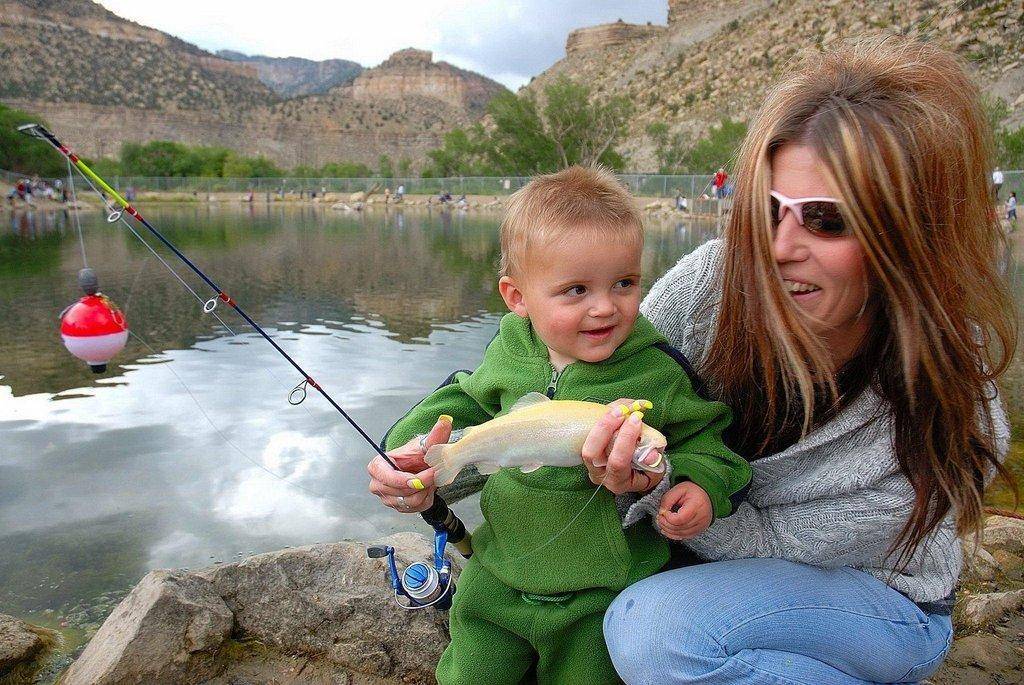Did you know that some of the best fishing you’ll find anywhere in Utah might be only 15 minutes from your home?
Utah is home to 40 community fishing waters. Most of the waters are found in cities along the Wasatch Front (from Logan to Santaquin) and in and near Cedar City and St. George. But cities that are outside those areas, including Helper, Monroe and Huntington, have ponds too.
The 2011 Utah Community Fishing booklet is filled with information about the ponds. The free booklet is available at www.wildlife.utah.gov/cf.
Good Fishing
The community waters provide anglers of all ages, from young children to senior citizens, a convenient, safe, inexpensive and fun place to fish. And the fishing itself can be really good!
Drew Cushing, sport fisheries coordinator for the Division of Wildlife Resources, says the DWR stocks catfish into the waters every two weeks. When they’re stocked, the catfish are about 17 inches long and weigh about 1¼ pounds each.
In addition to the catfish, most of the ponds have bluegill and largemouth bass in them. The bluegill can provide fast fishing that lasts all day. Largemouth bass aren’t as abundant in the ponds, but when you catch one, get ready for a fun fight. (Because largemouth bass aren’t abundant in the ponds, Cushing encourages you to release any largemouth bass you catch.)
Cushing says it doesn’t matter whether it’s spring, summer or fall, the ponds almost always produce good fishing. “Agreements we have with each city allow us to keep a stable amount of water in each pond,” he says. “Having stable water levels, and placing lots of fish in the ponds on a regular basis, means fishing at the ponds is almost always good.”
And you don’t need to know advanced techniques or have fancy equipment to catch the fish — a fishing rod and reel, some nightcrawlers, a hook and some sinkers, and maybe a bobber or two, are about all that’s needed.
To catch fish at the ponds, Cushing says placing a worm on a hook, casting it out and letting it rest on the bottom of the pond is about all you need to do. You can also place a bobber a few feet above the hook, cast the hook and the bobber out, and let the worm dangle under the bobber. “Fishing with a bobber is fun,” Cushing says, “especially if you’re fishing with kids. Kids love to watch the bobber move as a fish takes the bait.”
A third method is also very simple — attach a wet or dry fly to the end of your line, place a clear plastic bubble about five feet above the fly, then cast the fly and bubble out, and slowly retrieve it back.
If you use these simple techniques, you should wind up with a catfish, a bluegill or a largemouth bass on the end of your line. And any of these techniques will also put plenty of rainbow trout on the end of your line too. When the water cools at the start of September, the DWR will stop stocking catfish and will put rainbow trout into the ponds instead.
Trout stocking will continue until the waters freeze this winter.
Fishing vs. other activities
Cushing says in these tough economic times, taking your kids fishing at a community pond will not only build better memories than taking them to a movie — it might save you some money.
He says children under the age of 12 fish for free in Utah. “And for only $5,” he says, “kids who are 12 to 13 years old can buy a license that allows them to fish for 365 days from the day they buy the license.”
If you decide you want to catch some fish too, the cost for a 365-day fishing license for those 14 to 65 years old is $26.
“With a license, some basic fishing gear and enough gasoline to make t he short drive to the fishing pond and back,” Cushing says, “you and your kids can have a great time. And you’ll build memories that will last forever.”

